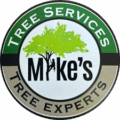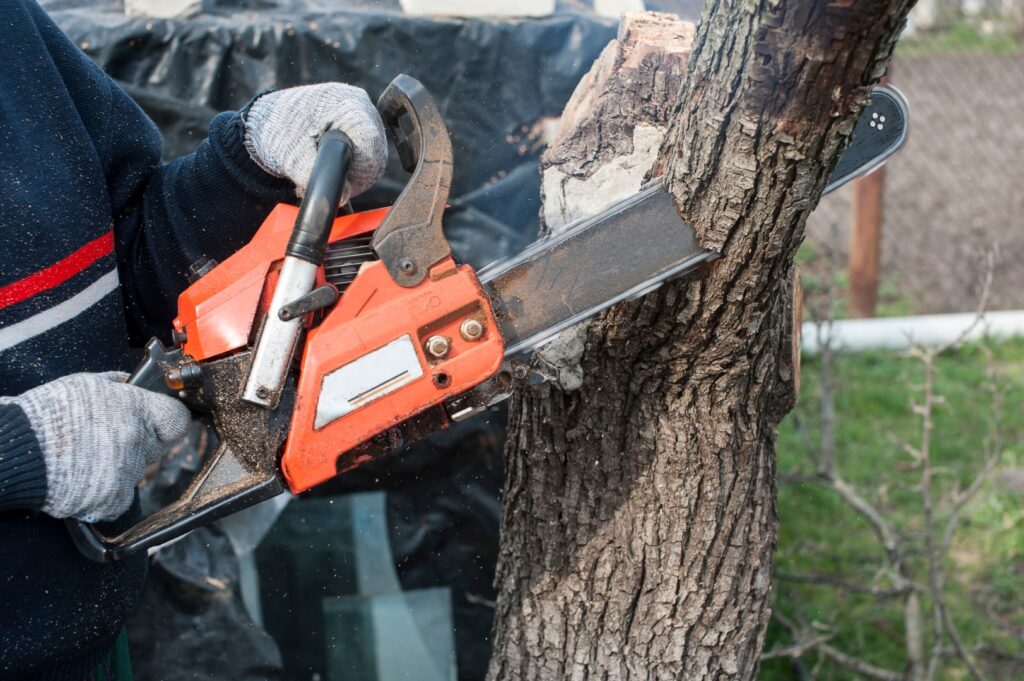Trees add natural beauty, shade, and character to any property. However, when a tree becomes unhealthy, unsafe, or inconveniently located, it may no longer be an asset—it could be a liability. At Mike’s Tree Service, we understand that knowing when to remove a tree is just as important as knowing when to preserve it. Here are key signs that it may be time to call in a professional tree removal team.
Dead or Dying Trees Are a Serious Risk
One of the most common reasons homeowners consider tree removal is when a tree shows signs of decline. Trees that are no longer alive or are in the process of dying can pose serious safety hazards. These trees often suffer from:
- Brittle or falling branches
- Sparse or missing foliage during growing seasons
- Bark that is peeling, cracking, or missing altogether
- Fungal growth such as mushrooms at the base
A dead or dying tree becomes structurally unsound and can fall during a storm or high winds. If you notice these symptoms, it’s time for a professional inspection before the tree causes damage or injury.
Leaning Trees Signal Instability
A slight lean in a tree isn’t always a cause for concern, but when the lean becomes pronounced or develops suddenly, it could mean the tree’s root system is compromised. This instability often results from:
- Soil erosion or poor soil compaction
- Root rot or structural root damage
- Storm damage, especially from strong winds or heavy rain
If a tree on your property begins to lean significantly, especially toward your home or a frequently used area, prompt professional evaluation is necessary.
Trees Encroaching on Structures or Power Lines
As trees grow, their branches and roots can start to interfere with nearby structures or utilities. Trees growing too close to buildings, fences, or overhead power lines can lead to:
- Roof and siding damage from overhanging branches
- Cracked foundations from intrusive roots
- Fire hazards or outages when branches contact power lines
Even if the tree appears healthy, its location can make it hazardous. In such cases, removal may be the most practical solution.
Exposed or Damaged Roots Threaten Stability
A tree’s health begins with its root system. Roots that are visible above ground, decaying, or surrounded by mushroom growth may be signs of internal damage. Heaving soil around the base of the tree or exposed roots can suggest that the tree’s foundation is no longer stable.
Since root damage is difficult to assess without expertise, it’s important to consult with professionals like those at Mike’s Tree Service to determine the extent of the issue.
Trunk Cracks, Cavities, and Splits
A strong, solid trunk is essential for supporting a tree. If you notice deep cracks, cavities, or vertical splits in the trunk, this could be an indication of serious internal decay. These structural flaws can weaken the entire tree and increase the risk of collapse. Sometimes these signs are hidden and require a trained eye to identify during a property inspection.
Excessive Deadwood in the Canopy
While the occasional dead branch is normal, a tree with multiple dead or dying limbs may be suffering from disease or insect infestation. Large amounts of deadwood increase the risk of falling branches, especially during windy conditions, and may require partial or complete removal to keep your property safe.
Fungal Infections and Pest Infestations
Fungi and insects thrive in trees that are already stressed or weakened. If you spot fungus growing on the bark or base, or see boreholes and frass (sawdust-like waste), your tree may be infected. Left untreated, these issues can spread to healthy trees nearby. In some cases, removal is the best way to stop further damage to your landscape.
Storm-Damaged Trees Can Be Dangerous
Severe weather events often leave trees vulnerable or damaged. Common types of storm damage include:
- Broken limbs hanging precariously
- Uprooted or partially uprooted trees
- Split or shattered trunks
Storm-damaged trees are unpredictable. Even if a tree appears stable after a storm, hidden damage may still exist. Always consult a professional tree removal service to assess post-storm safety.
Overcrowded Trees Compete for Resources
In landscapes with multiple trees growing close together, overcrowding can reduce access to sunlight, nutrients, and water. This competition often leads to stunted growth and vulnerability to pests and disease. Selective tree removal allows remaining trees to flourish while improving the health and aesthetics of your yard.
Tree Removal to Improve Curb Appeal or Function
Sometimes, tree removal isn’t about health or safety—it’s about creating space or improving aesthetics. Removing a tree may be the right choice if you want to:
- Open up your yard for new landscaping or hardscaping
- Eliminate obstructions to scenic views
- Make way for construction or renovations
- Increase natural sunlight exposure to your home or garden
Our team at Mike’s Tree Service performs safe, clean, and efficient removals that leave your property better than we found it.
Don’t Wait Until It’s Too Late
Delaying tree removal can put your home, vehicles, and family at risk. Whether your tree is damaged, diseased, or simply in the wrong place, the trained professionals at Mike’s Tree Service have the tools and experience to remove it safely.
We proudly serve the Denver area and are committed to protecting your property while enhancing its beauty. If you’ve noticed any of these signs or simply want a professional opinion, give us a call today. Our experts are happy to assess your trees and provide honest, professional guidance.
Don’t leave the health and safety of your property up to chance. Contact Mike’s Tree Service for expert tree removal services you can trust. We’ll help you determine whether your tree can be saved—or if it’s time for it to come down. Call today for a professional evaluation and peace of mind.

